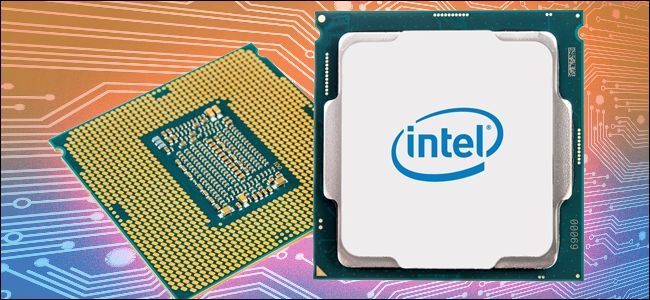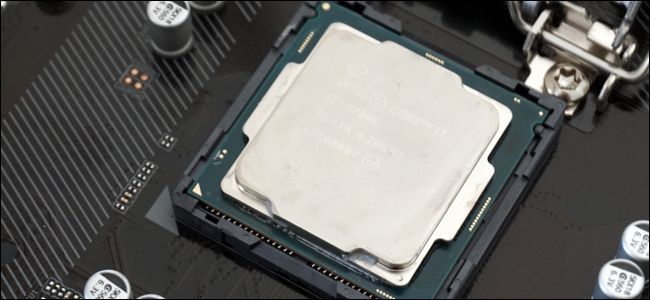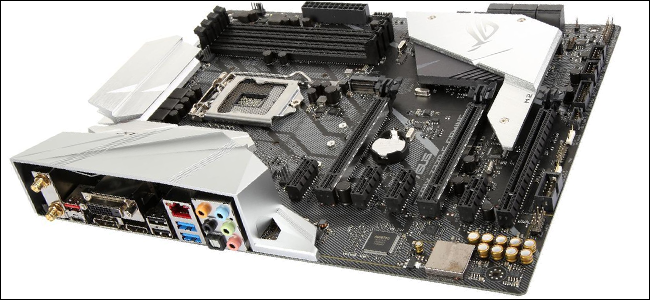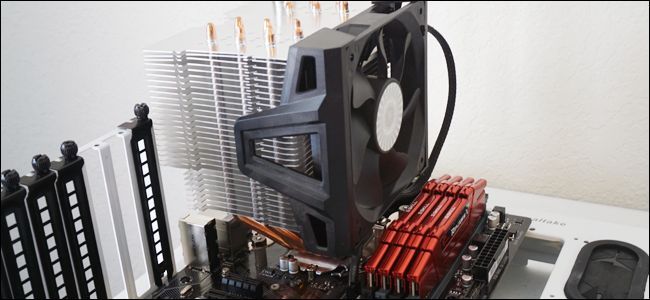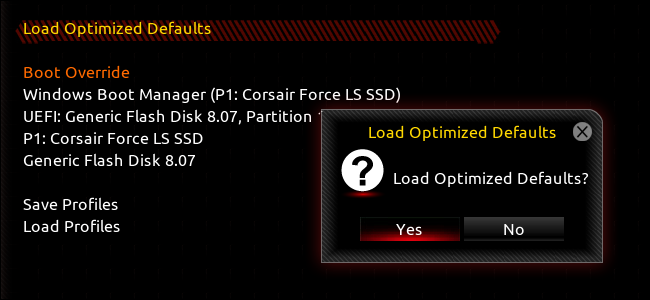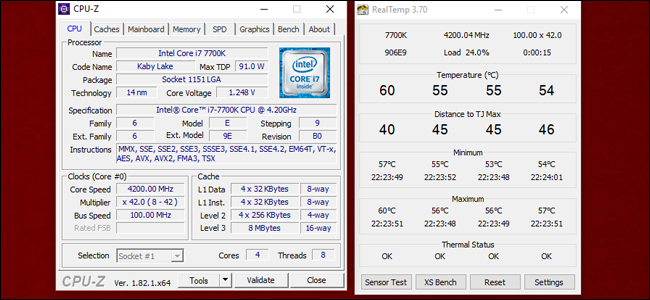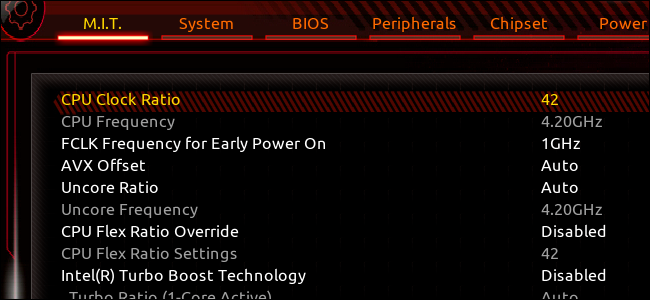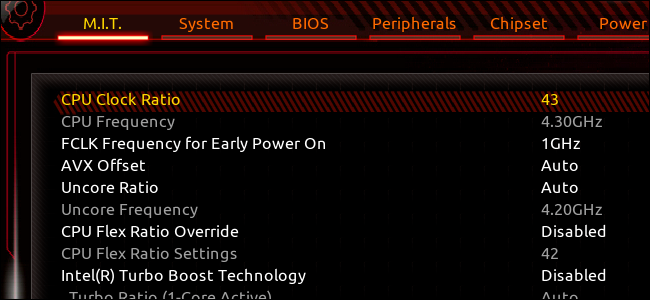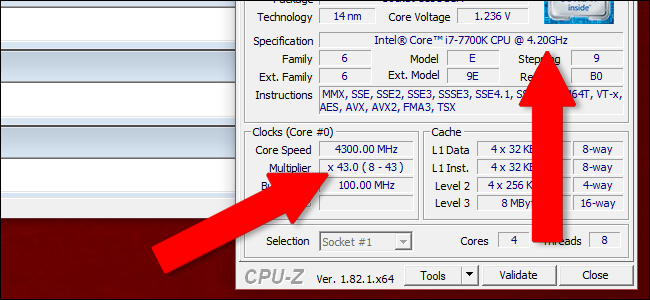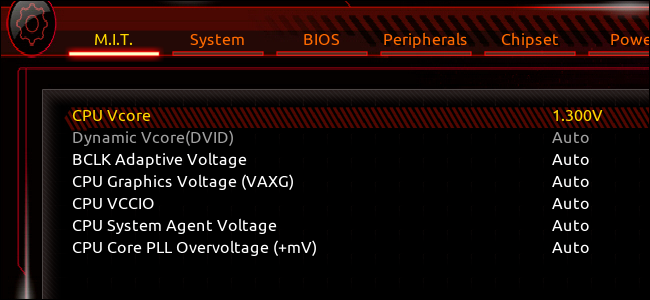Quick Links
Your computer is fast. Unbelievably fast, at least compared to the PC you had ten or twenty years ago. But it could always be a little bit faster. If that statement stirs a bit of tech-flavored longing in your soul, you might want to look into overclocking your processor.
Overclocking, the act of boosting your CPU's core clock beyond its factory setting, has been around for almost as long as personal computers have. And as a hobbyist activity, the process and its tools are almost constantly in flux. That being said, it's easier now than it's ever been.
Since our test rig uses an Intel processor and motherboard, and Intel is still far and away the leader in consumer-grade desktop systems (being installed in over 80% of systems), this guide will cover the overclock process for late-model Core unlocked (K-series) CPUs. But the general steps should apply to most of the desktops sold or assembled in the last few years. That said, make sure and read up on the process for your specific hardware before starting your overclock attempt.
Step One: Pick the Right Hardware
Before you start overclocking, you'll want to make sure you have the right hardware. If you've already bought or built your PC, you may not be in a position to do this, of course, but it doesn't hurt to know your hardware's limitations all the same.
Processor
Intel sells a staggering variety of processors, but for overclocking, the K- and X-series is where it's at. The "K" in this sense is more of a variable than an actual product line, signifying that the processor is "unlocked" and ready to be overclocked by the end user. There are options in i7, i5, and i3 models, and all of the newer and ridiculously powerful X-series are also unlocked. So if you're shopping for an Intel processor and you know you're going to try to overclock it, you want either a "K" or an "X" chip---the latest ones are all handily listed on this page. We'll be using a Core i7-7700K for this guide.
Is it possible to overclock a non-K Intel processor? Sometimes. It's just harder, and it'll probably need some support from your motherboard manufacturer. Also, Intel really doesn't want you to do it---to the point that they've actually issued software updates that closed previously-found loopholes enabling it. This policy is controversial among PC hardware enthusiasts.
I should also mention a concept known among enthusiasts as the "silicon lottery." The microarchitecture of modern CPUs is incredibly complex, as is the fabrication process. Even if two CPUs have the same model number and should theoretically be identical, it's entirely possible that they'll overclock differently. Don't be upset if your specific CPU and setup as a whole can't hit the same overclocking performance as someone reporting their results online. This is why it's incredibly important to go through the long, arduous process yourself instead of just plugging in someone else's settings---no two processors will overclock the exact same.
Motherboard
Next, you'll want to make sure your motherboard is up to snuff. Technically, any motherboard should be able to overclock its processor, but some are designed specifically for the process and some aren't. If you're in a position to choose, look for an enthusiast or "gaming" motherboard. They're a little pricier than more pedestrian models, but they have access to UEFI/BIOS updates and manufacturer software specifically designed to make overclocking easy. You can also often find Newegg reviews that discuss a motherboard's overclocking settings, and the quality thereof. Enthusiast and gaming motherboards from ASUS, Gigabyte, EVGA, and MSI are good choices in this regard.
Oh, and this goes without saying, but I'll say it anyway: you need a motherboard with a socket that's compatible with your CPU choice. For Intel's latest unlocked processors, that's either socket LGA-1151 (K series) or LGA-2066 (X series).
CPU Cooling
Even if you're starting from an existing system that wasn't built with overclocking in mind, you'll want to use an aftermarket CPU cooler. These parts are much more powerful and efficient than Intel's in-box coolers, featuring bigger fans and vastly expanded heatsinks. In fact, the Intel processor we bought for the test system didn't even come with a stock cooler, because Intel assumes anyone interested in that premium unlocked model will want to use their own aftermarket cooler.
The options for CPU coolers are staggering, even if you don't want to go for the more premium water cooling option. You can spend anywhere from $20-100 for an air cooled version, and much more for elaborate liquid cooling options. But if you're on a restrictive budget, there are more than a few economical options. The cooler we'll be using is the Cooler Master Hyper 612 V.2, which has a street price of just $35 and will fit inside most full-sized ATX cases. We could probably get better results with a more expensive and elaborate model, but this one will let us boost our clock rates dramatically without getting into unsafe temperature ranges.
If you're picking out a new cooler, aside from price you'll need to consider two variables: compatibility and size. Both air coolers and liquid coolers need to support the socket type of your motherboard. Air coolers also need the physical space available inside your PC case, especially vertical space (measuring from the top of the motherboard to the side of the case). Liquid coolers don't need much space around the CPU socket, but they do need available space near the case fan mounting areas to fit their fans and radiators. Double-check the specs of your prospective purchase and your PC case itself before making a decision.
If you've made your selections, make sure everything is installed and working correctly without any overclock applied, then continue.
Step Two: Stress Test Your Setup
We're going to assume you're starting with everything relating to your CPU set to the default. If you don't, boot up into your computer's UEFI now (better known as the BIOS) and change it back. You can do this by rebooting the computer and pressing the relevant button on the POST screen (the one with the motherboard manufacturer logo). This is usually Delete, Escape, F1, F12, or a similar button.
Somewhere in your UEFI/BIOS settings, there should be an option to set everything back to the default value. On our test machine running a Gigabyte motherboard, this was under the "Save & Exit" menu, labeled as "Load Optimized Defaults." Select this option, wherever it is, save your settings, then exit the UEFI.
There are a few other changes you should make too. On our i7-7700K, in order to get more stable and predictable benchmark results, we had to disable the Intel Turbo Boost option for each of the four cores in the chip. This is Intel's built-in, stable semi-overclock, which boosts the clock speed of the processor when intense processes are going on. That's a handy feature if you never dive into overclock settings, but we're hoping to exceed the speeds that Turbo Boost gently applies, so it's best to turn it off. If I may use a car metaphor, we're going to be driving this one with a stick-shift.
Depending on your processor, you may want to disable the C State option or other power-saving tools which work in the opposite way, underclocking the processor when its full power isn't needed. You can turn these on after overclocking, however, to see if they still work---some people have reported that power-saving features don't work as well after overclocking, while on other systems they'll work just fine.
Got everything set to default, with the extra bells and whistles turned off? Good. Now boot into your main operating system (we're using Windows for this guide, but many of these tools should work on Linux as well). Before you do any overclocking, you'll want to stress test your system and get a benchmark of where you're starting. You'll want something that runs your CPU and other components at their maximum level of performance---essentially, simulating the most intense computer usage possible, to see if it causes a crash. This is what we'll be using to test system stability throughout the entire overclocking process.
I recommend Prime95 as your stress-testing tool, because it's simple, free, and available on all three major desktop operating systems. Other popular alternatives include AIDA64, LinX, and IntelBurnTest. Any should work, and you can even use a combination of two if you really want to do your due diligence (my editor is a fan of using both LinX as his primary stress testing tool, with Prime95 serving as a secondary test at the very end to make extra sure everything is stable.)
Whichever one you've chosen, download it, install it, and run it. Let it run through its initial test, then re-test a few times to make sure your CPU can handle extended runs of 100% usage and maximum heat. You might even be able to hear the fan on your CPU cooler jump up to its maximum speed to deal with the increased load.
Speaking of which, while the stress tests are running, it's a good time to download some other tools that we'll be using later: a CPU information tool to keep an easy eye on your changing values, and a CPU temperature monitor to watch the heat. For Windows, we recommend CPU-Z and RealTemp, respectively. Download and run them now---you can use the latter to watch your CPU's core temperatures rise under your stress test.
Temperatures are going to be crucial to the overclocking process. While running the stress test under the default conditions with our Intel i7-7700K CPU and aftermarket CPU cooler, we saw temperatures on the internal sensors range from about 45-55 degrees Celsius. That sounds hot (50 degrees Celsius is about 122 Fahrenheit), but it's nothing to worry about. CPUs are designed to run at these high temperatures with the aid of PC cooling systems. Our processor's maximum allowable temperature before it automatically reduces the clock or shuts down (known as the Tmax or Tjunction) is 100 degrees Celsius---over 200 degrees Fahrenheit. When we overclock, our goal will be to boost the processor to the point where its temperatures are still in a reasonably safe margin below 100 Celsius with the system running stable.
If you've run your processor through a few tests with its use at 100% and its temperatures are in a safe range, and your PC hasn't crashed, you're ready to proceed.
Step Three: Raise Your CPU Multiplier
Now it's time to start overclocking. Reboot your PC and get back into your UEFI (BIOS). Look for a category named something like "Overclock Settings". Depending on the creativity of your motherboard manufacturer's technical writer, it might be labelled "CPU Booster" or something similar.
In that section, look for the "CPU Clock Ratio" setting, or something to that effect. In our Gigabyte motherboard's UEFI, it was under the default tab > Advanced Frequency Settings > Advanced CPU Core Settings. Google around with your manufacturer's name and the UEFI version number if you're not sure where to find it.
Your clock speed is determined by two things: the bus speed (100MHz in our case) and the "clock ratio", or multiplier (in our case, 42). Multiply those two values together, and you get your CPU's clock speed (in our case, 4.2GHz).
In order to overclock the system, we're going to increase the multiplier, which in turn increases the clock speed. (We're going to leave the bus speed at the default).
I'm going to adjust the multiplier setting to 43, just one step up, to raise the maximum frequency to 4.3GHz. You may need to enable changes to your system to actually allow the UEFI to change the multiplier.
Once that's done, save your UEFI settings and exit, then boot back into your operating system. You can use CPU-Z to check and make sure your clock is showing the new, higher frequency. In my case, you can see in the Core Speed and Multiplier fields on the left are set to 4.3GHz (give or take a few hertz as the computer operates), and 43, respectively. You'll also see the stock speed on the right under "Specification"---this won't change no matter how much you overclock, and that's okay. It's just listing that as part of the processor's name. The settings on the bottom left are the ones you want to check.
(Note: if you're seeing something lower for Core Speed and Multiplier, you might need to start a more stressful operation like your stress test to make the CPU go into its maximum.)
Go back to Step Two and run your stress test again. If your system is stable at the new higher CPU frequency, repeat Step Three and boost your multiplier a bit more. It's possible to just set it as high as you think it can go (a Google search for users with similar setups can help set your expectations), but slow and steady bumps are a safer and more precise way to achieve your desired results.
At some point, you will reach a stopping point. Either your computer will crash during stress testing (or the stress test will fail), or you'll reach the maximum CPU temperature you're comfortable with (for me, that's usually about 10 degrees less than the Tjmax value).
If you experienced a crash or stress test failure, move onto Step Four. In the (rarer) case you experienced your max temperature, skip Step Four and move on to Step Five.
Step Four: Repeat Until Failure, Then Boost Voltage
If your stress test failed or caused the computer to crash, but your temperatures still have room to go up, you can continue to overclock by increasing your CPU's voltage. Boosting the voltage that the motherboard delivers to the CPU via the power supply should allow it to stabilize at faster speeds, though it will also increase your temperatures significantly.
Once again, we're going to dive into the UEFI to adjust this setting. In Gigabyte's UEFI, it's under M.I.T > Advanced Voltage Settings > CPU Core Voltage Control.
Here you're going to do pretty much the same thing: boost the voltage a little bit, repeat steps two and three until your computer crashes, then increase your voltage again. The recommended step up is .05 volts---again, baby steps take longer, but you'll get much more reliable results.
Keep an eye on your temperatures as you go through this process---again, the more you boost the voltage, the more your temperatures will increase. If your tests fail at +.2 volts or more, it's possible that you just can't increase the voltage while remaining stable. Again, remember the "silicon lottery"---it's possible that your specific CPU won't behave exactly the same as others with the same model number.
Repeat steps Three and Four in a round robin. Increase multiplier, stress test, repeat until something crashes, then increase voltage and stress test again. Eventually, you'll reach a point where your temperatures reach the maximum level you're comfortable with, or your stress tests consistently fail and/or cause the computer to crash. When that happens, step it back to your last stable overclock.
For me personally, I wasn't even able to raise the voltage at all---my highest stable overclock was 4.7GHz, using the stock voltage setting. If I pushed it any farther, I reached my CPU's Tjmax value and it would start throttling back. The 7700K is a notoriously hot chip, so this makes sense. You may find that your chip allows for more overclocking overhead, or you may find that you're like me and you can only boost it a little bit. It all depends.
Step Five: The Big Test
Now that you've reached a point where you think your overclock is stable, it's time to put it to one last, super-rigorous test. What you're doing here is seeing whether your PC can run at this higher clock speed and voltage for hours on end. Because if you're going to all this trouble to boost your speeds, odds are pretty good that you want to use it consistently.
Turn back on those power-saving features (if desired), and set up your stress testing program to run continuously. Prime95 will do this automatically, other programs may need to be set to a clock value. Several hours at least---long enough that the hotter temperature inside your PC stabilizes. (Also, if you live somewhere with particularly hot temperatures and you don't have adequate cooling for whatever room you're in, be aware that ambient temperatures could create a more strict upper limit to your overclock during the summer.) If it can handle that without either the processor getting too hot, the test failing, or the whole thing crashing, you've got yourself a rock-stable overclock. If it can't handle it, scale your CPU multiplier and voltage values back, and try again.

